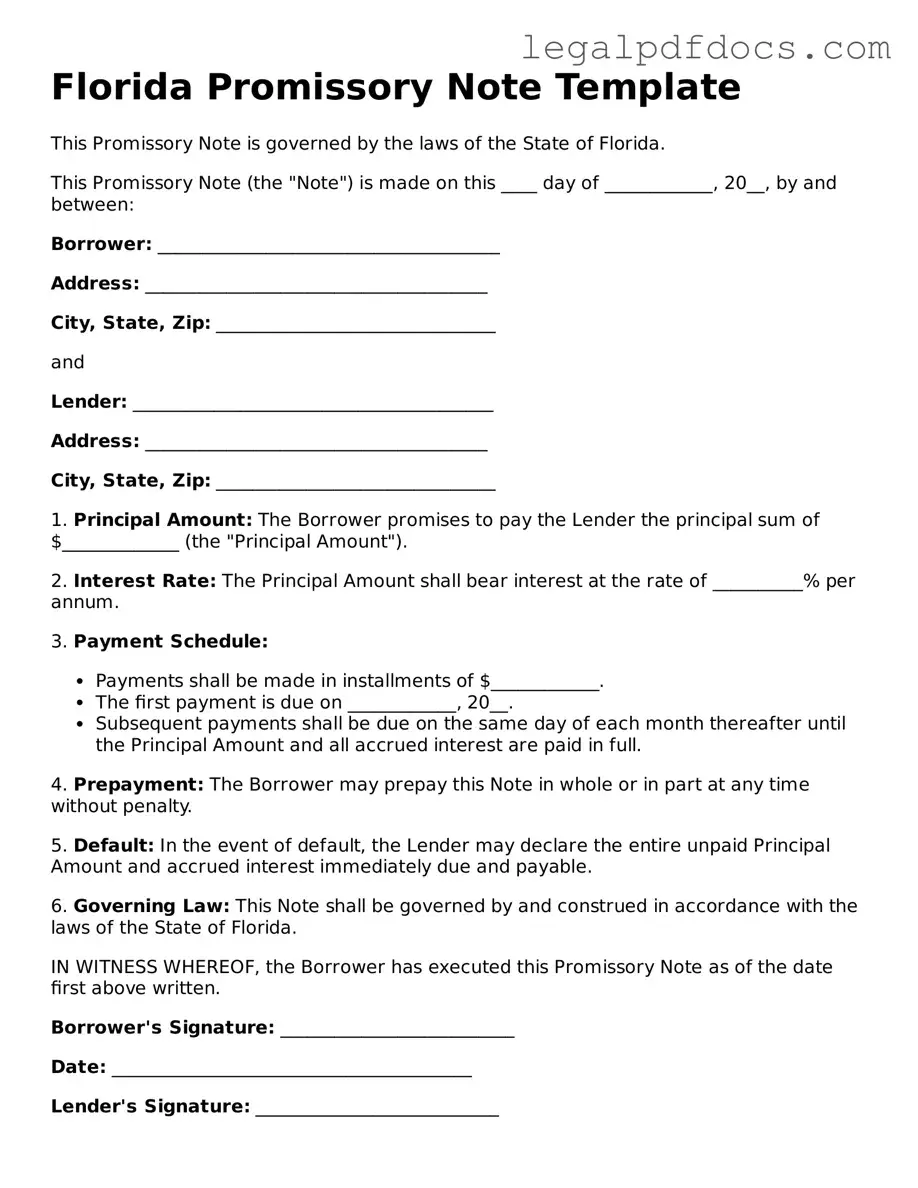Official Promissory Note Form for Florida
A Florida Promissory Note is a legal document that outlines a borrower's promise to repay a specified amount of money to a lender under agreed-upon terms. This form serves as a written record of the loan, detailing the repayment schedule, interest rate, and any penalties for late payments. Understanding its components is essential for both borrowers and lenders to ensure a clear agreement is in place.
To fill out the Florida Promissory Note form, click the button below.
Open Promissory Note Editor Here
